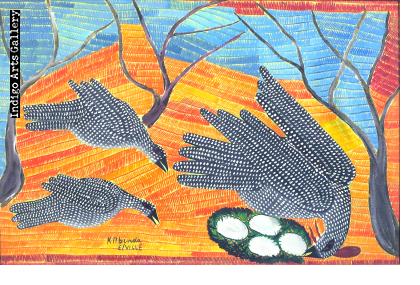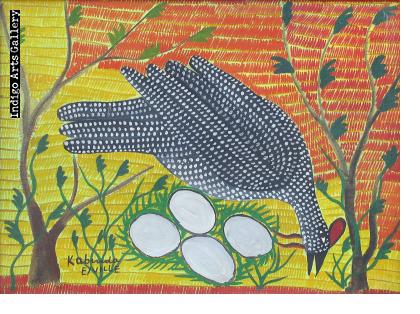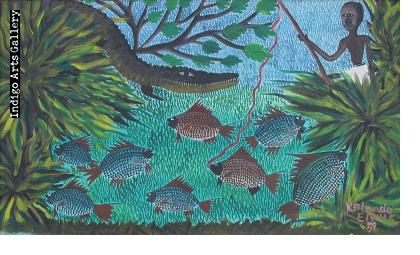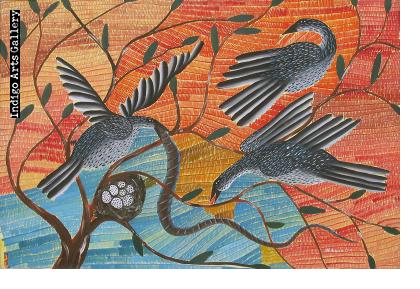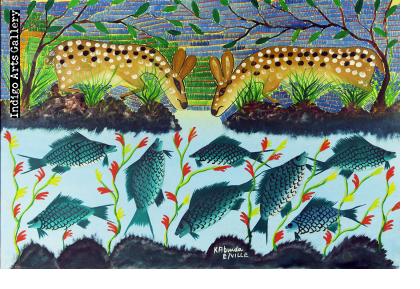About the Artist
Kabinda was one of the painters that emerged from the "le Hangar" art workshop founded by Pierre Romain-Desfossés in 1946 in Elisabethville, the Belgian Congo. According to an interview with him that was conducted in 1973 by Johannes Fabian, of the University of Amsterdam, Kabinda was born in 1927 in the village of Kinda, in the Luba region of the Congo. His parents were of the Ndembu ethnic group. In those days he was known as Kabinda Victor, but by the time of the interview he went by Kabinda Kunkulu. Under the rule of Mobutu Sese Seko the name of the country was changed to Zaire and people were "encouraged" to shed their "colonial" (meaning European) names and take "authentic Zairian" names.
Kabinda moved to Elisabethville (now Lubumbashi) to attend school in 1942, a few years before Desfossés founded L'Academie Congolaise d'Art Populaire, popularly known as le Hangar. He came to le Hangar to learn to paint in 1948, two years after it was established. Some of its best-known artists, such as Bela, Pilipili Mulungoy and Mwenze Kibwanga, were already working there. Kabinda's work was clearly influenced by them, particularly by Pilipili Mulungoy. His work was largely of the natural landscape, and he became known for his paintings of birds and fish. In his 1973 interview Kabinda recalls that he in turn instructed a carpenter named Mwila (whose work is also included in this collection), and Mwila taught the fellow artist named Kanyemba. The work of several of the le Hangar artists was featured in the groundbreaking 2015 exhibit Congo Beauté 1926 - 2015 Congo Kitoko, at the Fondation Cartier in Paris. In subsequent years as the Congo went through many transitions, Kabinda worked in many jobs, including as a nurse at a military base, and a museum clerk, but kept returning to painting. By 1973 he was still painting but his subject matter had changed to more figurative work.

